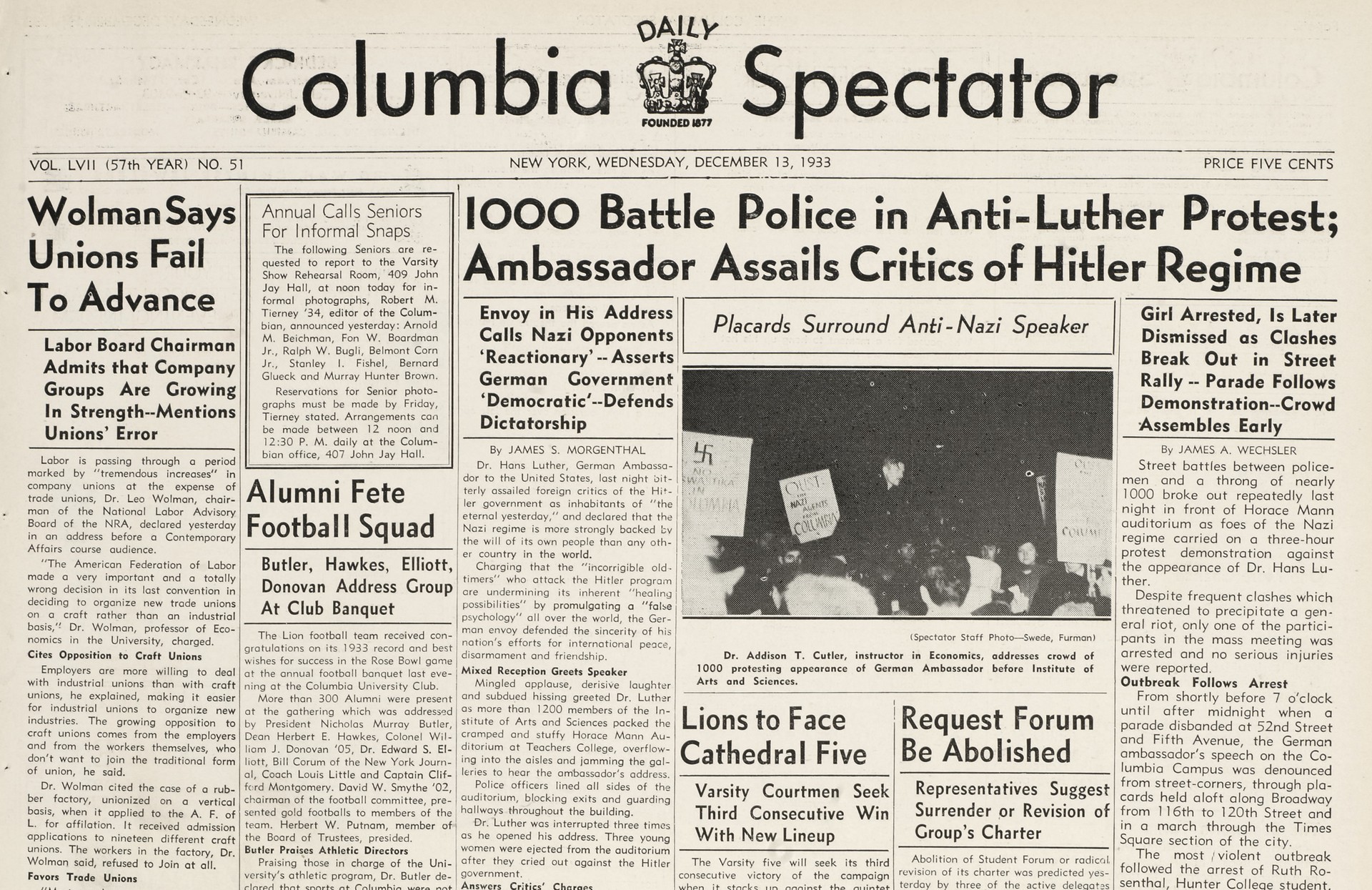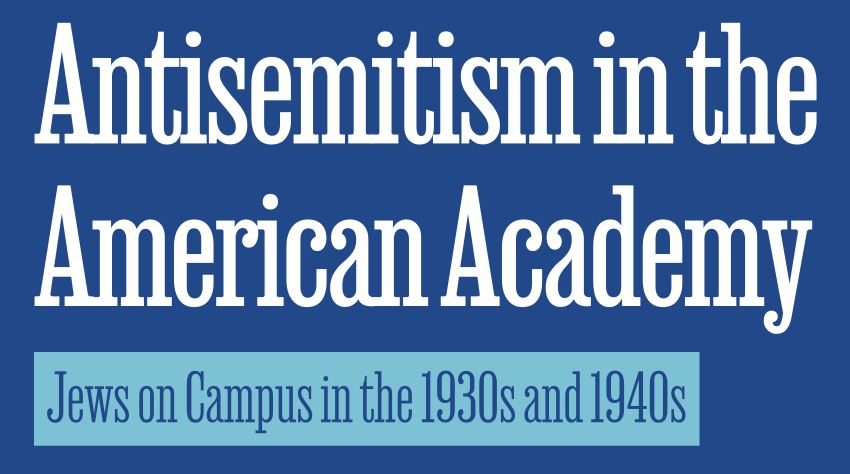
Front page of the Columbia Spectator, December 13th, 1933.
Source: Columbia University

While German Jews experienced direct persecution, American Jews faced different challenges. Although they confronted fewer barriers to entry at American universities during the 19th century, American Jews encountered increasing restrictions in the 1920s. The rise of nativism and anti-immigrant sentiment at the time of the restrictive Johnson-Reed immigration bill (1924) encouraged many elite universities to introduce quotas for Jewish students in the effort to protect the student body's "Anglo-Saxon" character from Jewish overrepresentation. Through the introduction of legacy admissions and racial profiling in applications, the percentage of Jews on Ivy League campuses plummeted.
Postcard of the City College of New York (CCNY)